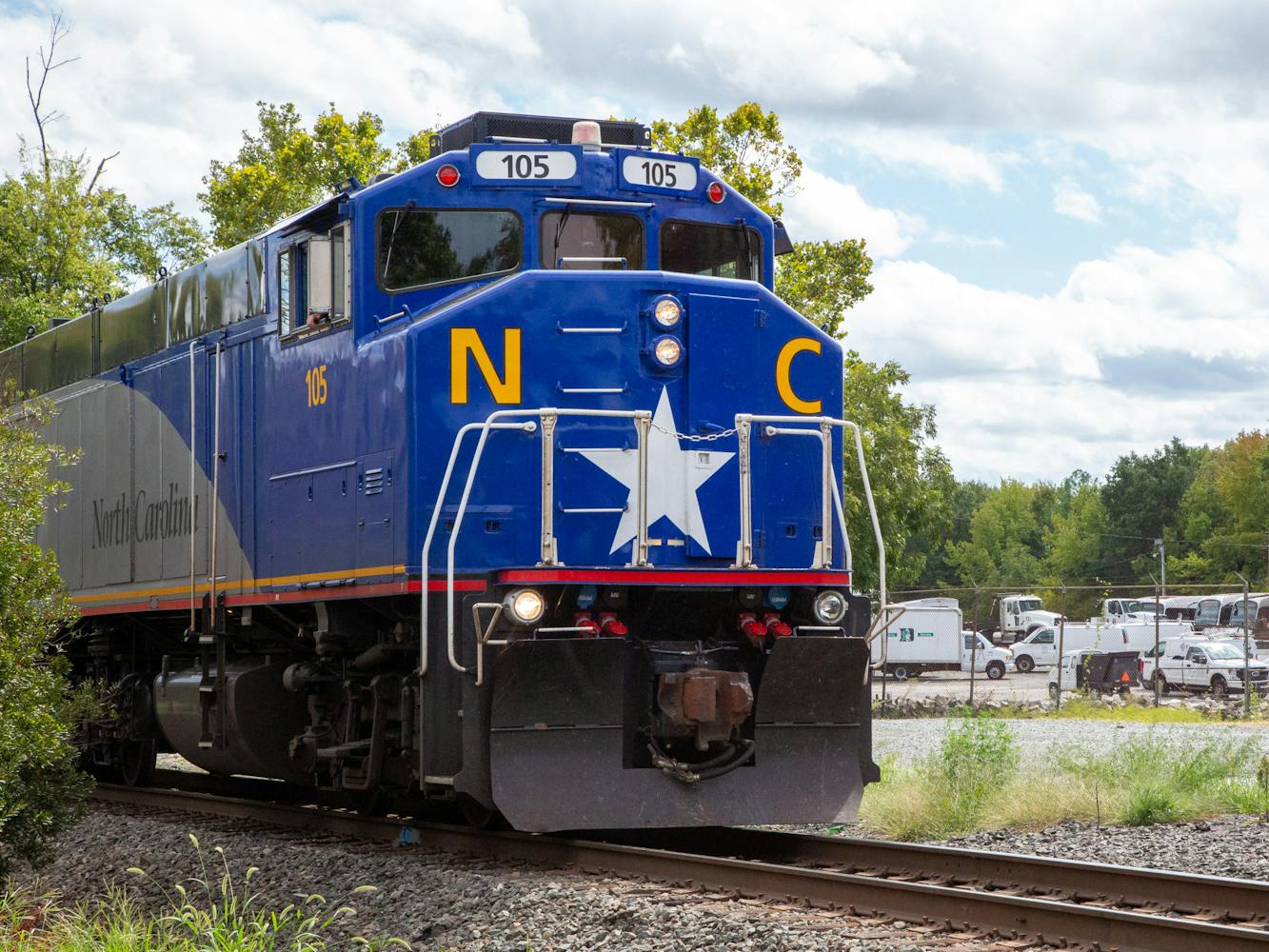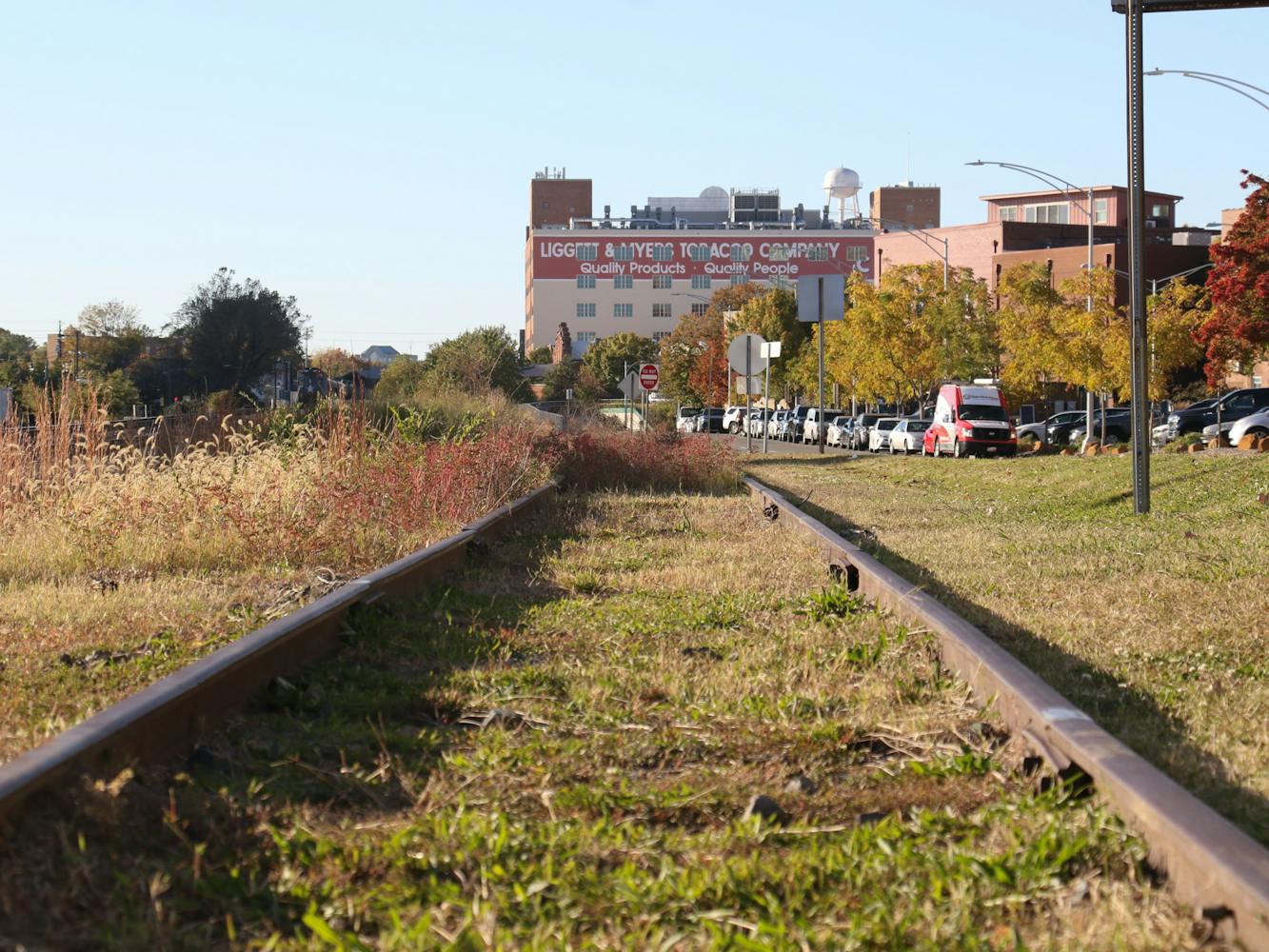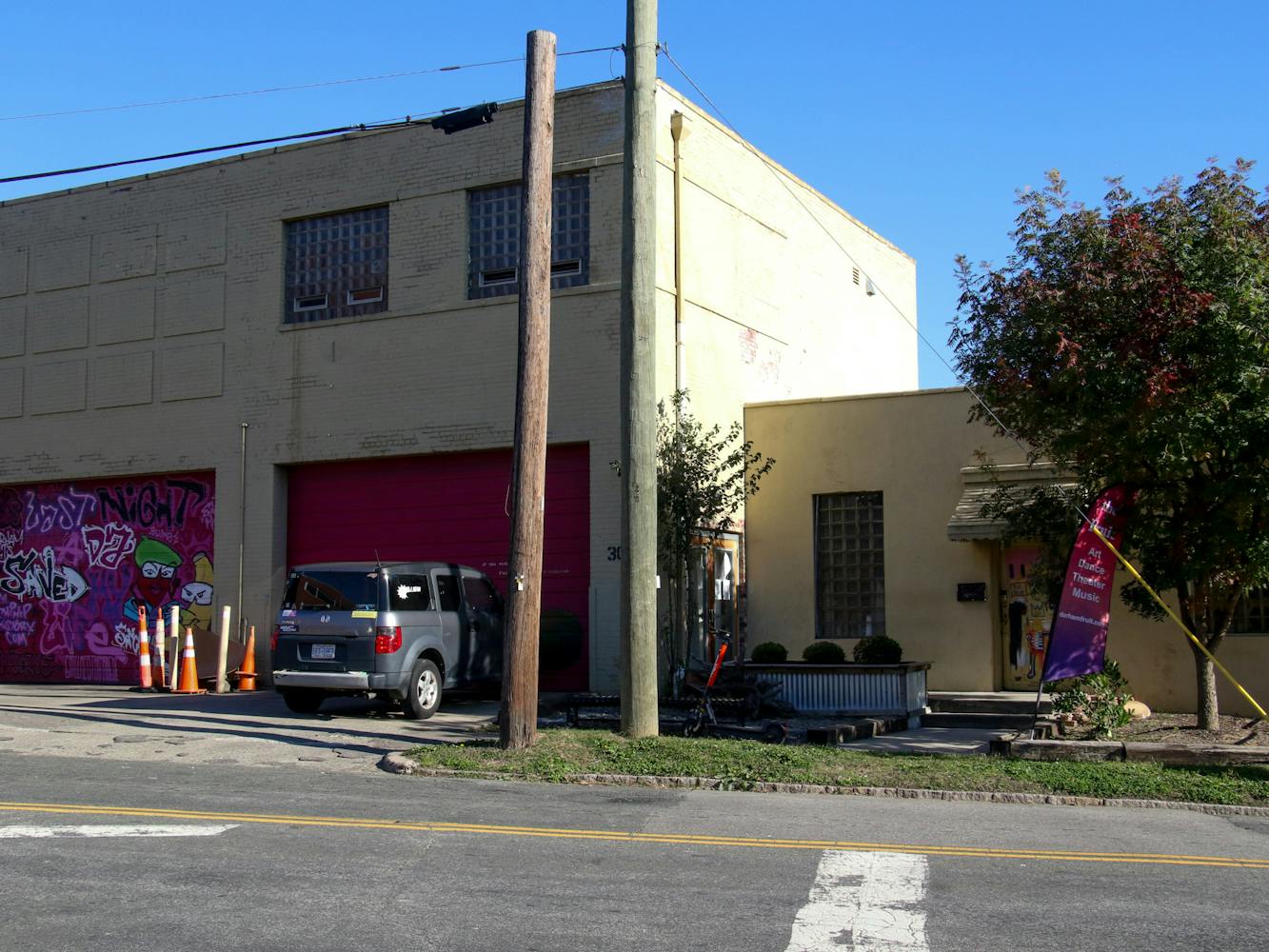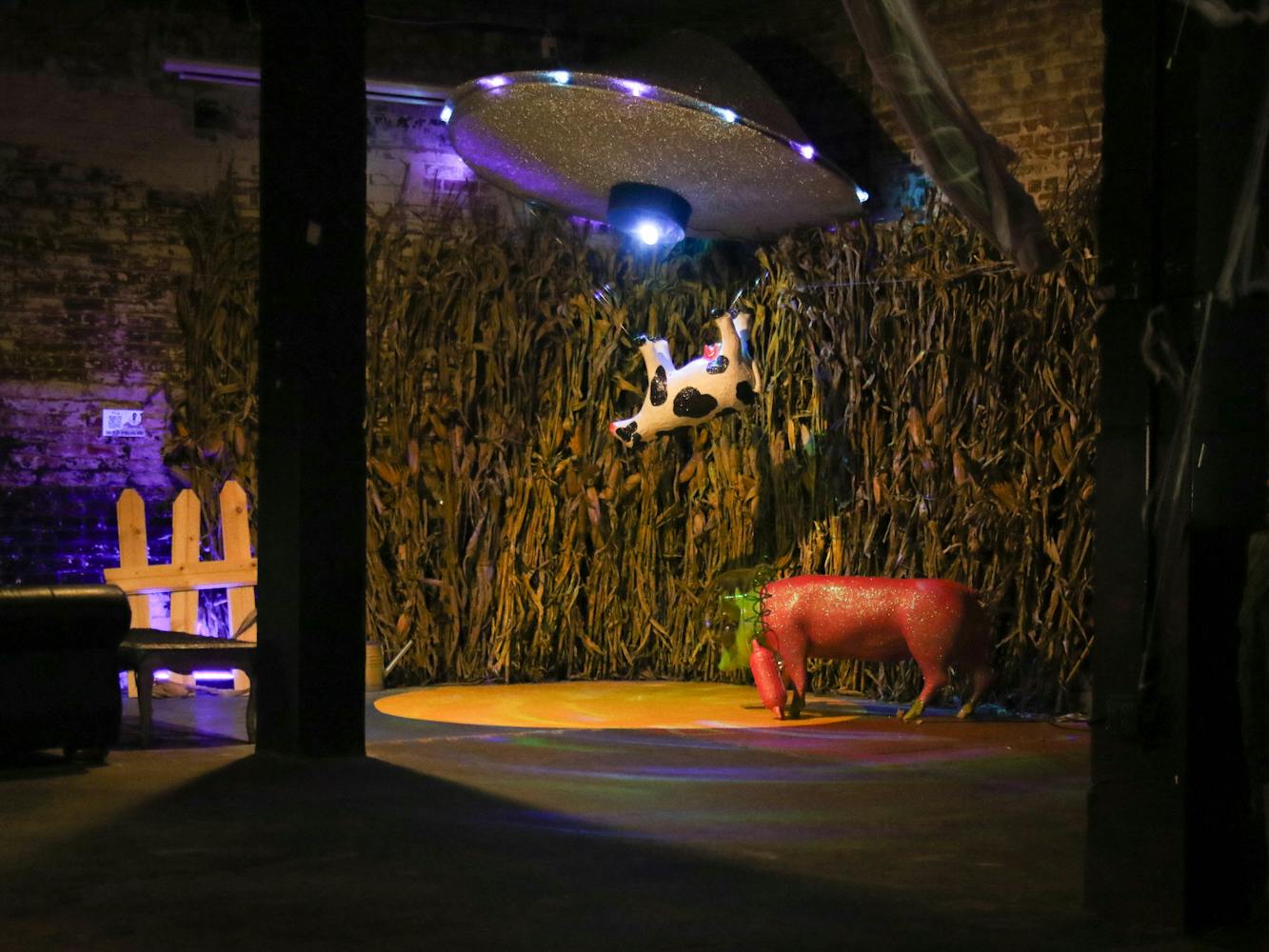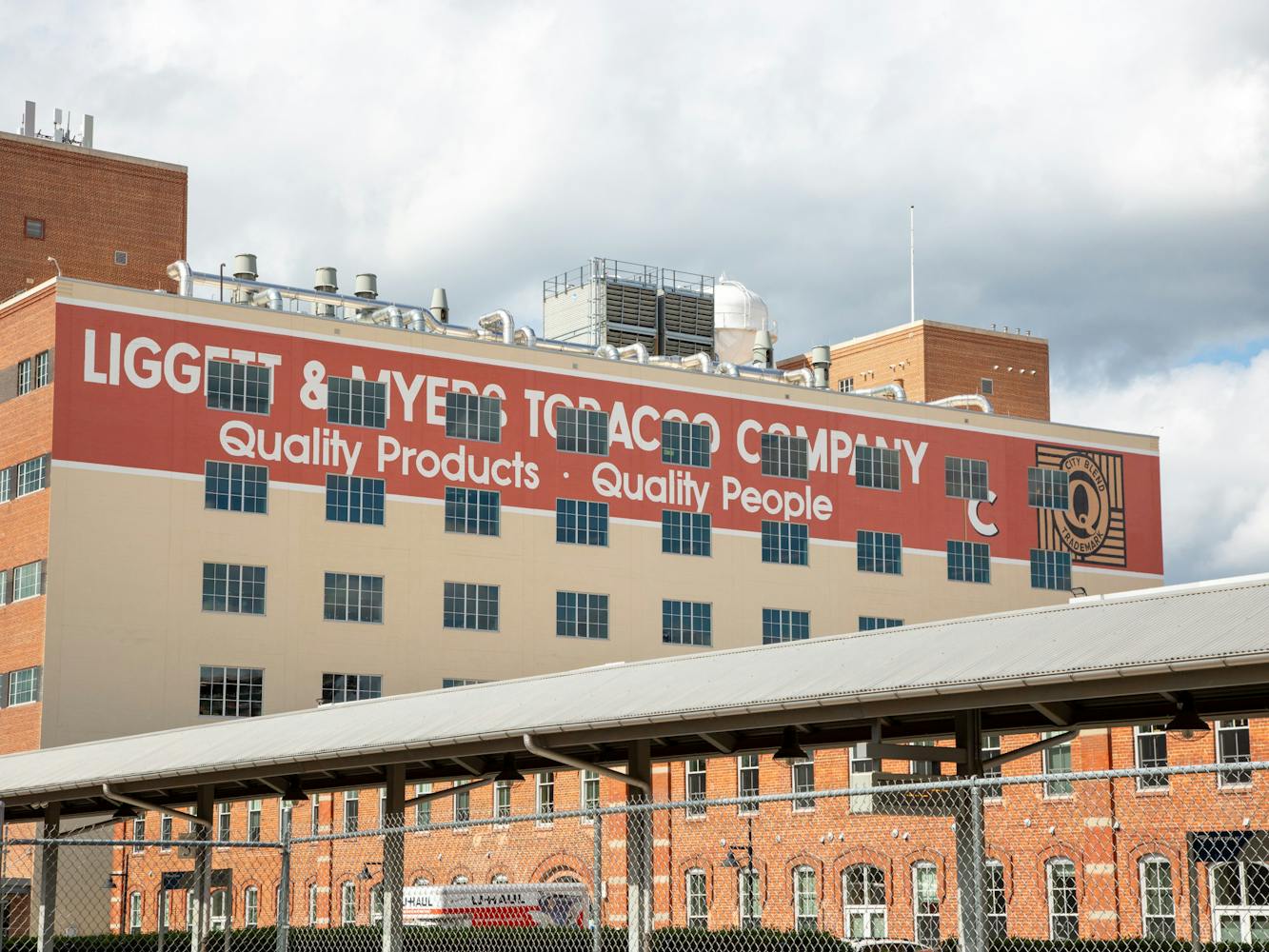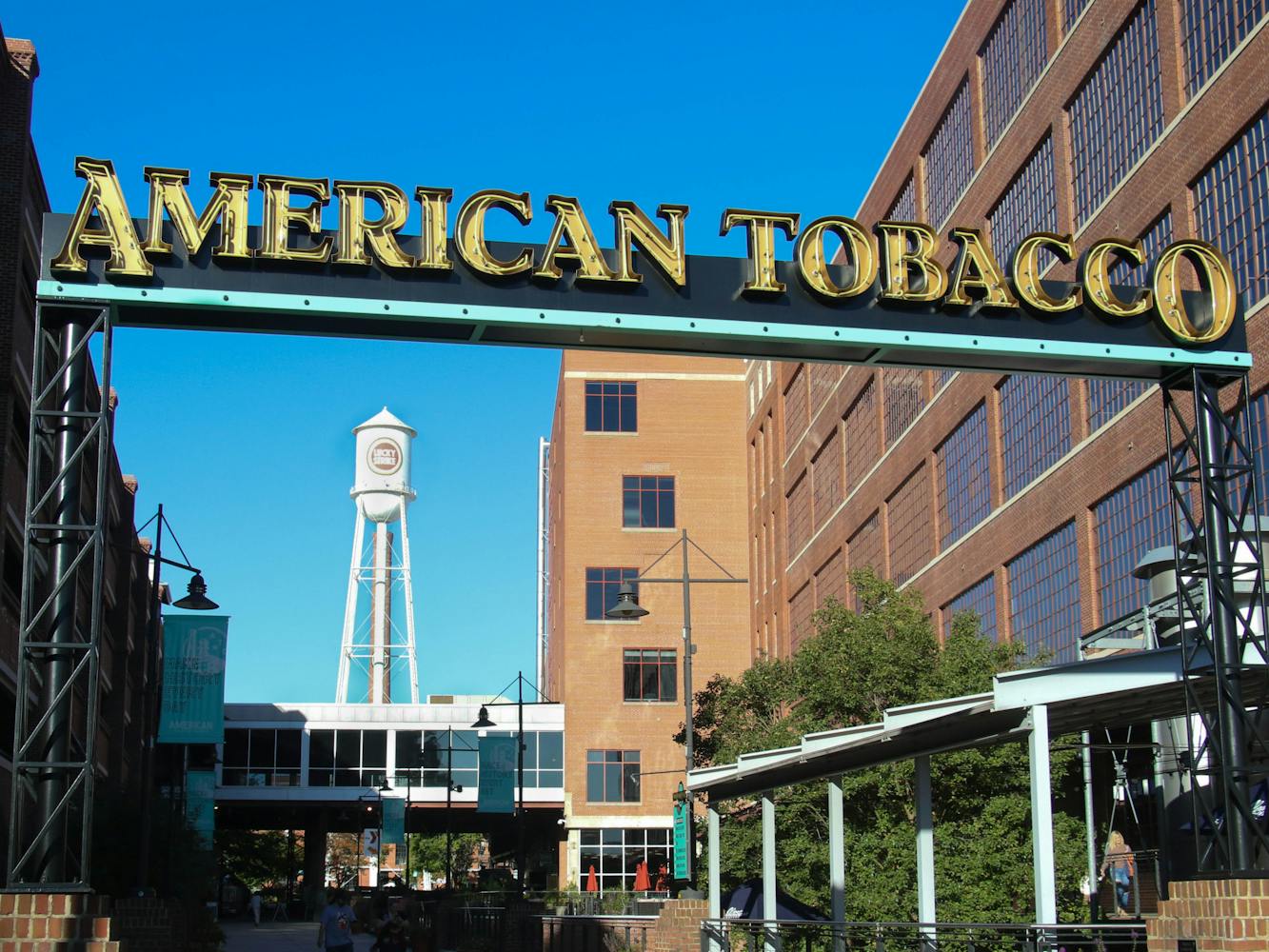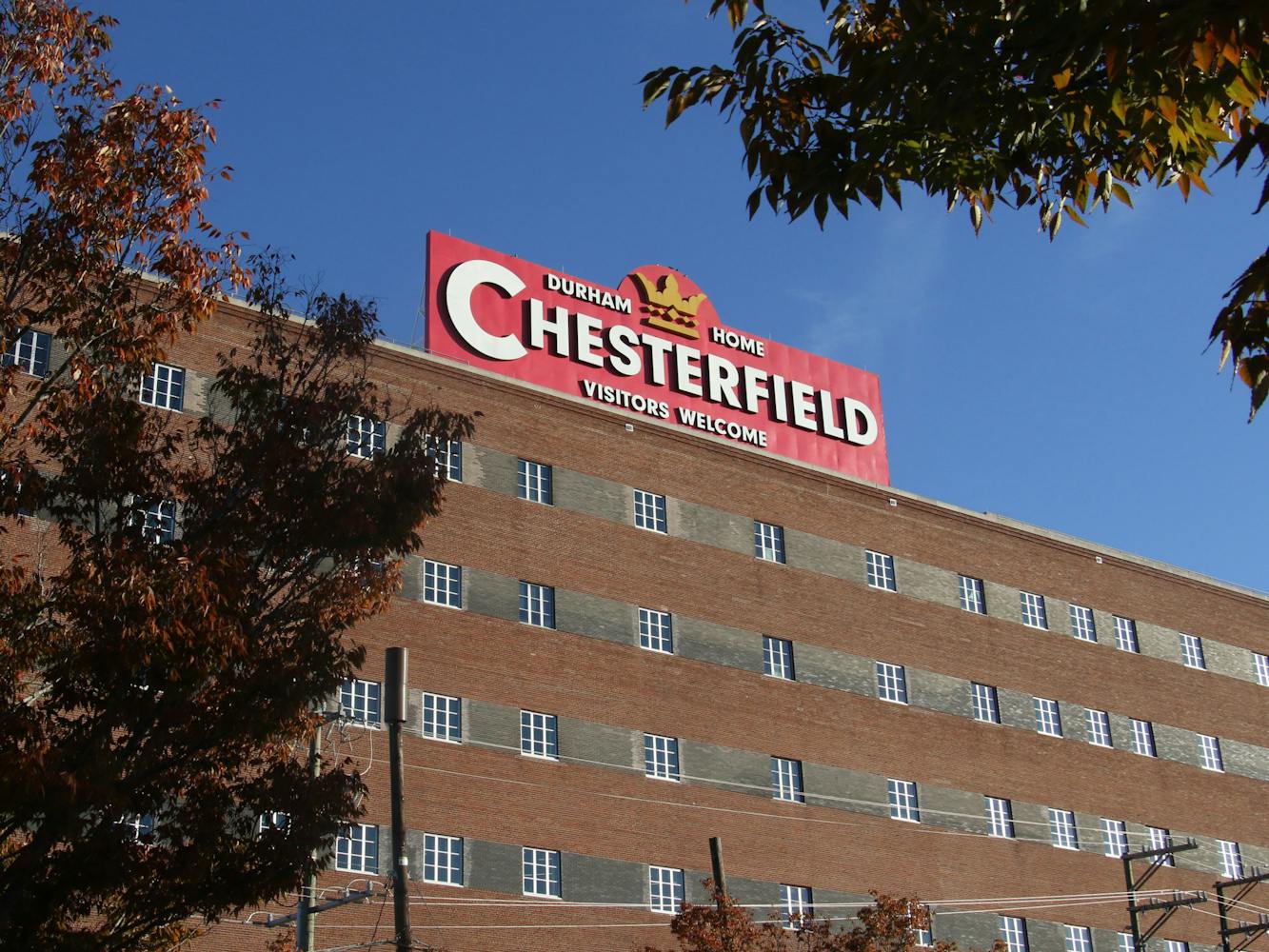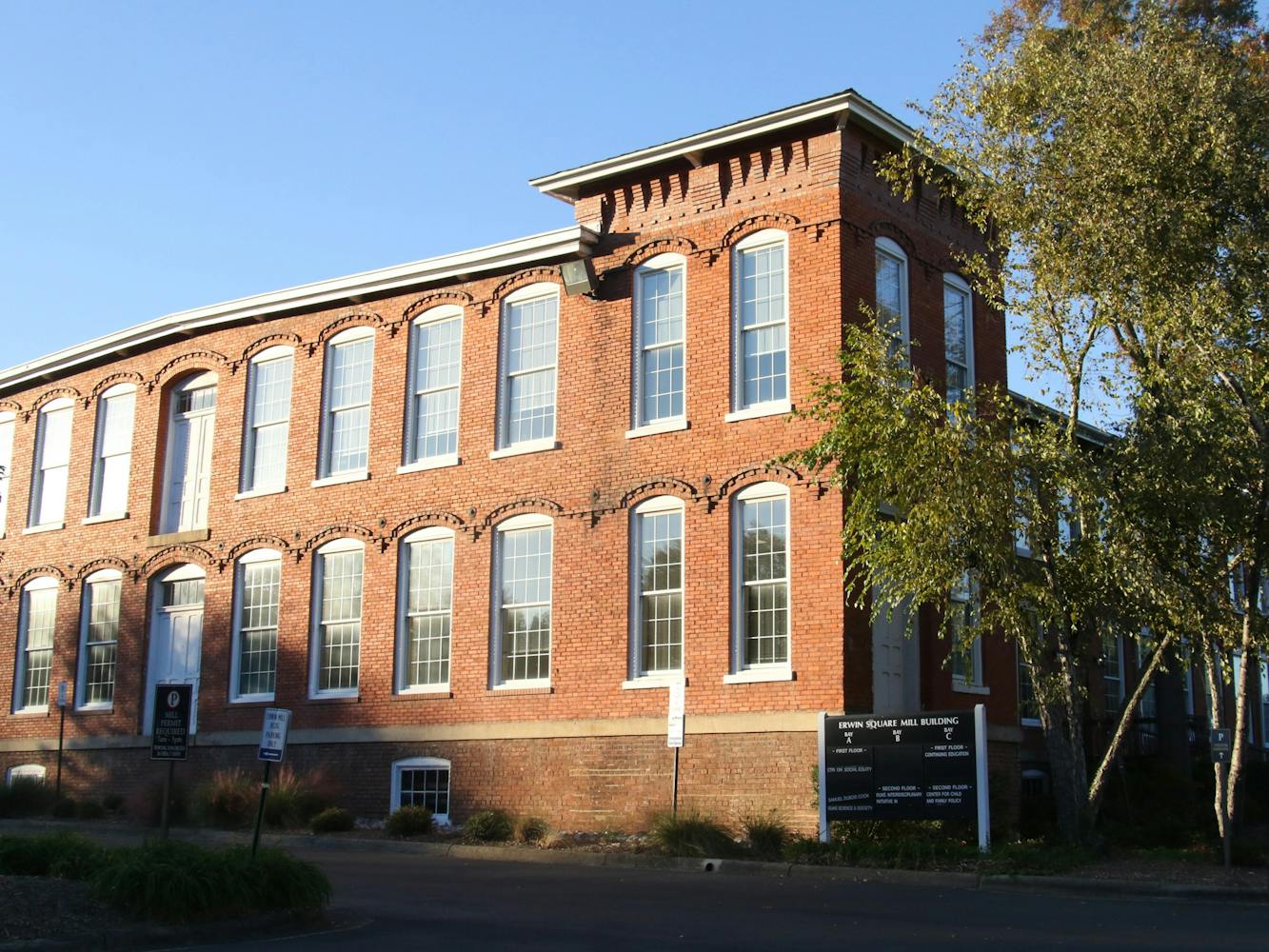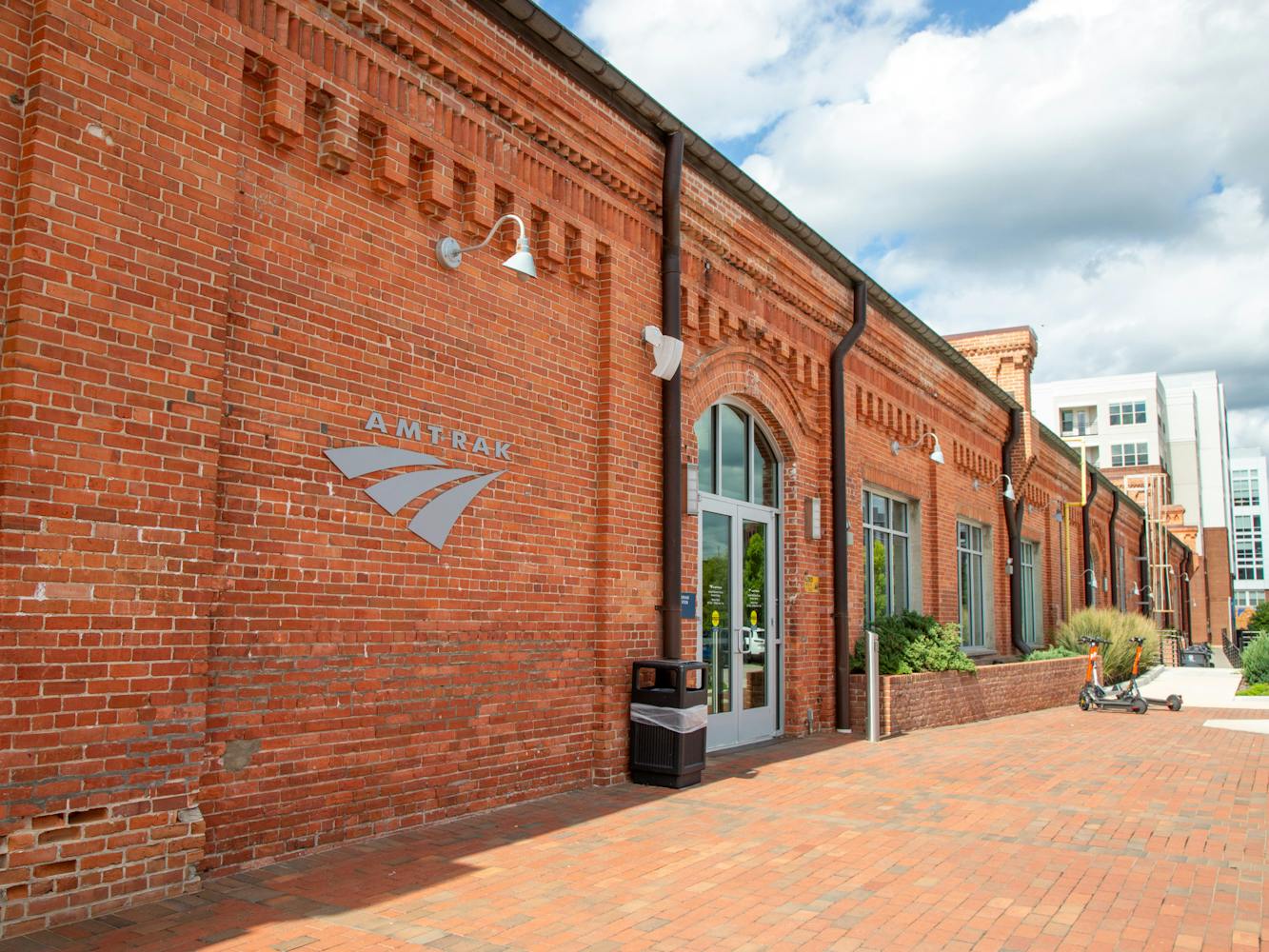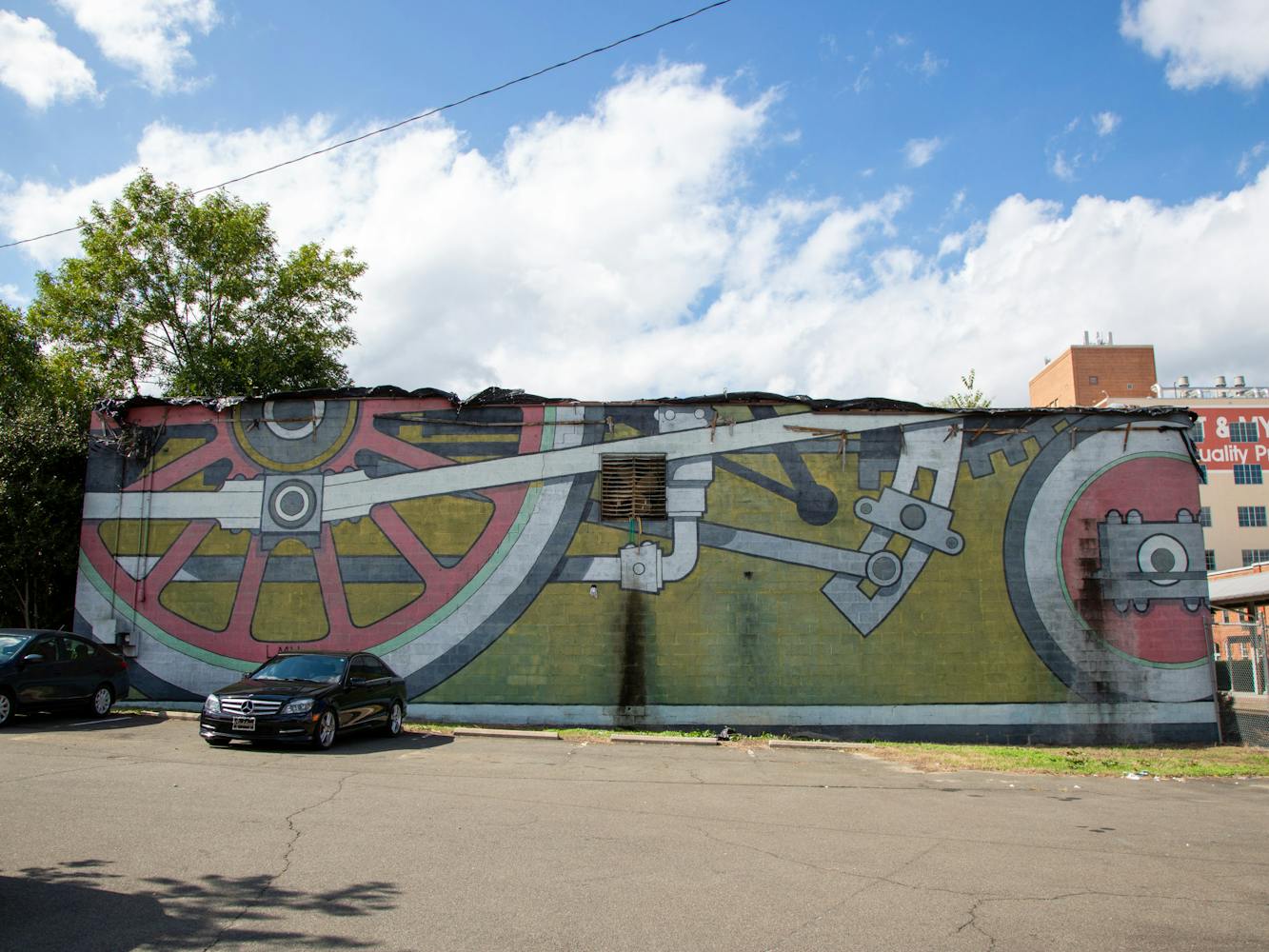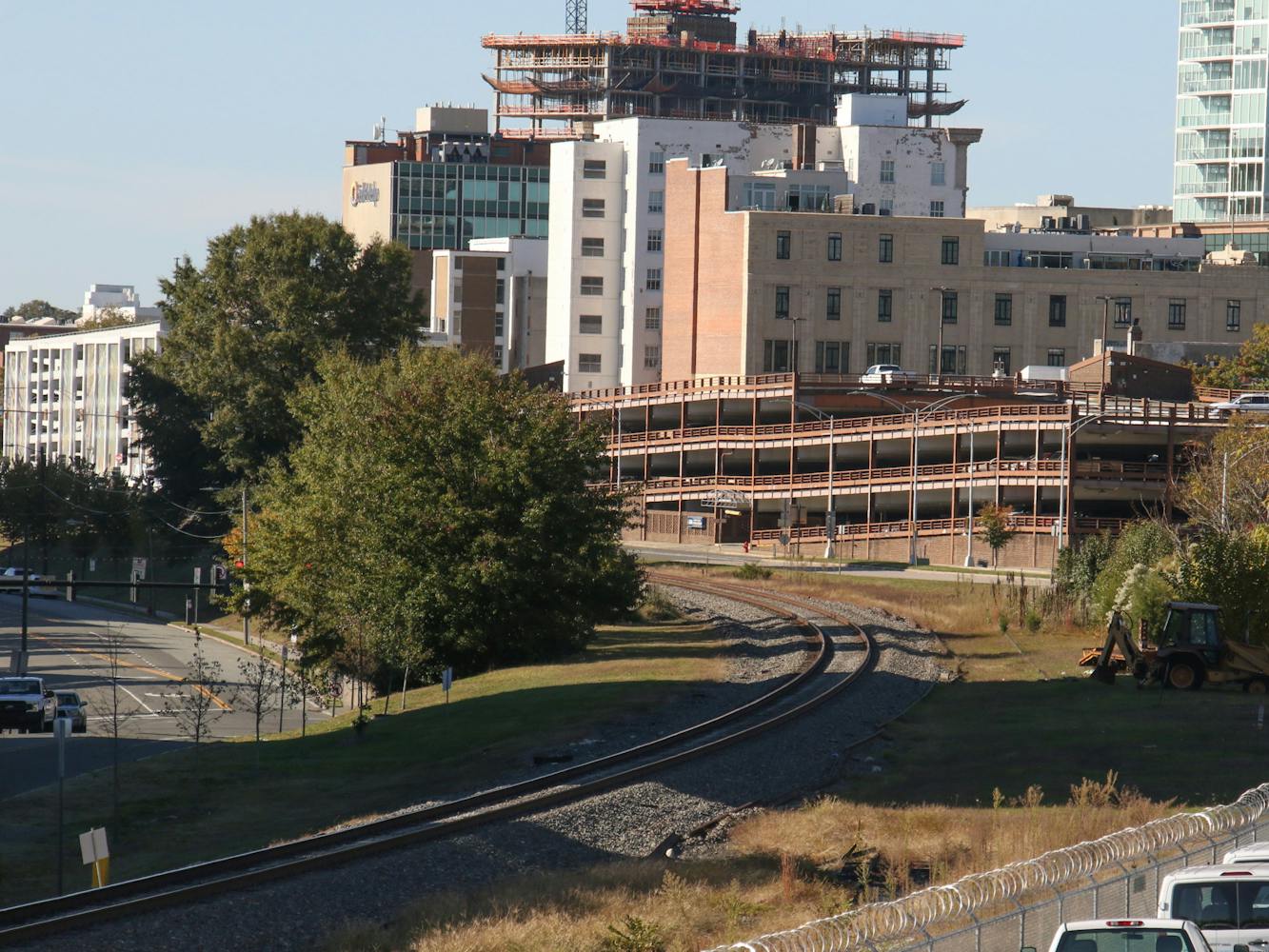From East Campus and Swift, Durham's trains are easily heard — but there is much more to the history of these trains than meets the ear.
Railroad crossing
Signs of Durham's trains are visible all throughout town. South Duke Street and West Pettigrew Street are pictured here.
The train heard 'round Durham
If not seen, Durham's trains may very well be heard. Pictured here is the Northbound train (Carolinian/Piedmont Train 72) departing from Durham Station to Raleigh.
The humble beginnings of Durham rail
Construction of the Durham and Southern Railway began in 1898 and eventually spanned 56.8 miles. In 1978, it became part of the Seaboard Coast Line Railroad, and many railway segments have been abandoned since then.
Durham rail turned to trail
In 2018, Durham City purchased the Belt Line, a 1.7-mile stretch of inactive railroad, and repurposed it as a trail under the Durham Rail Trail plan.
The origins of The Fruit
The unassuming exterior of The Fruit. This space was initially used as a warehouse for fruits and vegetables transported by Durham's trains.
Inside The Fruit
Now, the interior of The Fruit boasts some impressive visual arts displays including sculptures, paintings and photographs. The Fruit is regularly used as a venue for nightlife and the performing arts, such as the Pratt School of Engineering 2023 E-Ball.
American Tobacco then
Durham Railway contributed to the rise of the tobacco industry in Durham. James B. Duke founded the American Tobacco Company in 1890, and it soon dominated the industry.
American Tobacco now
Duke's business eventually declined, and the American Tobacco Campus reopened in 2004 as the American Tobacco Historic District with various attractions, athletic events, concert venues and restaurants.
A (Chesterfield) sign from above
The American Tobacco Company acquired Liggett and Myers Tobacco Company in 1899, but the Supreme Court ordered the American Tobacco Company to dissolve 12 years later. In 1948, Liggett and Myers Tobacco Company constructed the Chesterfield building as their main factory. After its abandonment in 2000, the Chesterfield building was repurposed as lab space for biotech companies.
Erwin Mill
Get The Chronicle straight to your inbox
Sign up for our weekly newsletter. Cancel at any time.
Like tobacco, the textile industry also saw significant growth following the development of the Durham Railway. Benjamin Duke incorporated Erwin Mill (pictured) in 1892, which was in operation between 1893 and 1986. It quickly became one of North Carolina’s largest cotton mills and has since been redesigned into a multipurpose space for housing and offices.
Once a warehouse
Before it became a station, the Amtrak station building was built in 1897 as a warehouse by the American Tobacco Company Trust.
Now a station
The warehouse reopened in 2009 as Durham's Amtrak station, and it currently services two passenger trains — the Carolinian and Piedmont.
One view from the Amtrak
A mural of automotive parts visible from the Durham Amtrak Station might remind viewers of the significant impact trains have had on Durham's history.
A different Durham
Despite the decline of the tobacco and textile industry driven by railway development, Durham continues to grow. Growth is now being fueled by the local job market, concentration of education and affordable living costs.


